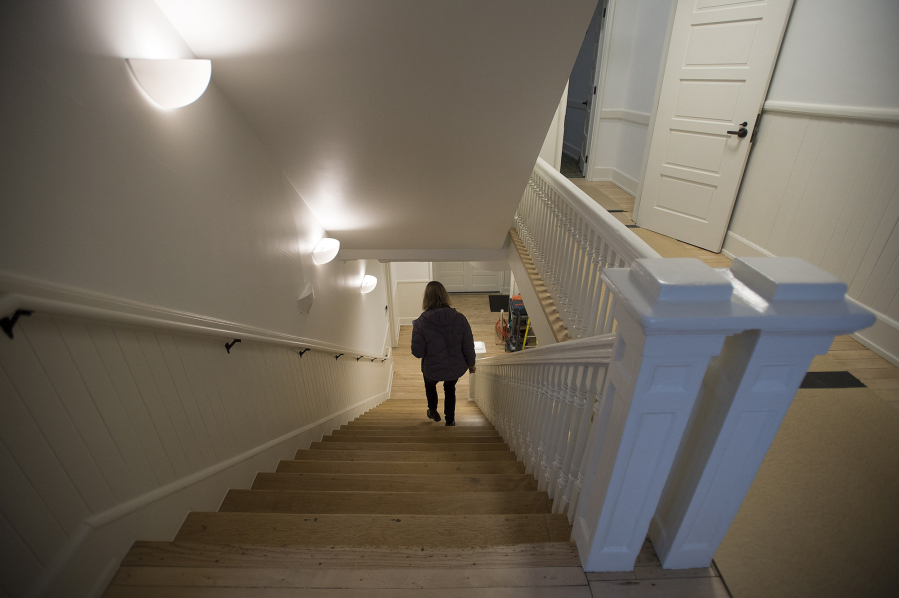A project that turned a century-old Fort Vancouver infantry barracks into a new Forest Service headquarters has been recognized as one of Washington’s outstanding examples of historic preservation.
Fort Vancouver National Historic Site was among those honored by Washington archaeology and historic preservation officials. The renovation of Infantry Barracks Building 987 received one of the state Department of Archaeology and Historic Preservation’s 2017 awards for outstanding achievements in building rehabilitation.
The two-story building reopened in January as headquarters of the Gifford Pinchot National Forest.
The project “posed particular challenges, beyond a normal rehabilitation, because of cultural and archaeological resources and historic landscapes,” Tracy Fortmann, supervisor of Fort Vancouver National Historic Site, said after Thursday’s announcement.
The structure is at the west end of the row of four buildings facing Officers Row. The double barracks is just across Fort Vancouver Way from the O.O. Howard House. Built in 1907, the structure had been vacant since 2010, when the Army Reserve’s 104th Division was transferred north to Joint Base Lewis-McChord.
The National Park Service took over the east and south portions of Vancouver Barracks in 2012.
“There is always concern when historic structures are rehabilitated for adaptive reuse — especially when you try to incorporate modern systems and our demand for technology,” said Alex Patterson, Fort Vancouver’s facilities manager. “In addition to knowing what we need now, you’re also building in capacity for the future.”
Before the rehab, the 45,000-square-foot building contained asbestos and lead paint, as well as an array of maintenance and structural problems. The $11 million project included exterior work as well as an interior makeover.
While designing for 21st-century technology, the renovation preserved many of the building’s historical architectural features, including pressed tin ceiling panels, original stair railings and the original wood floors.
Designers also wanted to represent the original interior layout, Fortmann said. That meant removing interior walls that had been built over the years, restoring the historic open floor plan.
The annual Valerie Sivinski Award is named in honor of a Tacoma architect who died in 2000. Two other rehabilitations were honored this year — projects that restored the 1923 Elks Building in Ellensburg and the 1927 Publix Hotel in Seattle’s historic Chinatown/International District.
Another Clark County heritage project was a factor in an individual award: Ken Ames was honored in the Career Achievement category. As a professor at Portland State University, his 30 years of fieldwork included the Cathlapotle village site near present-day Ridgefield.




